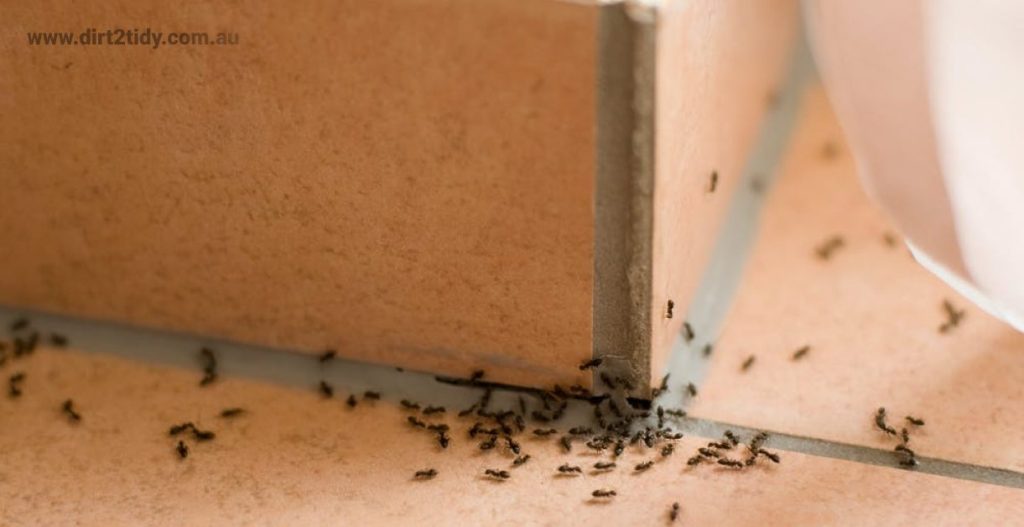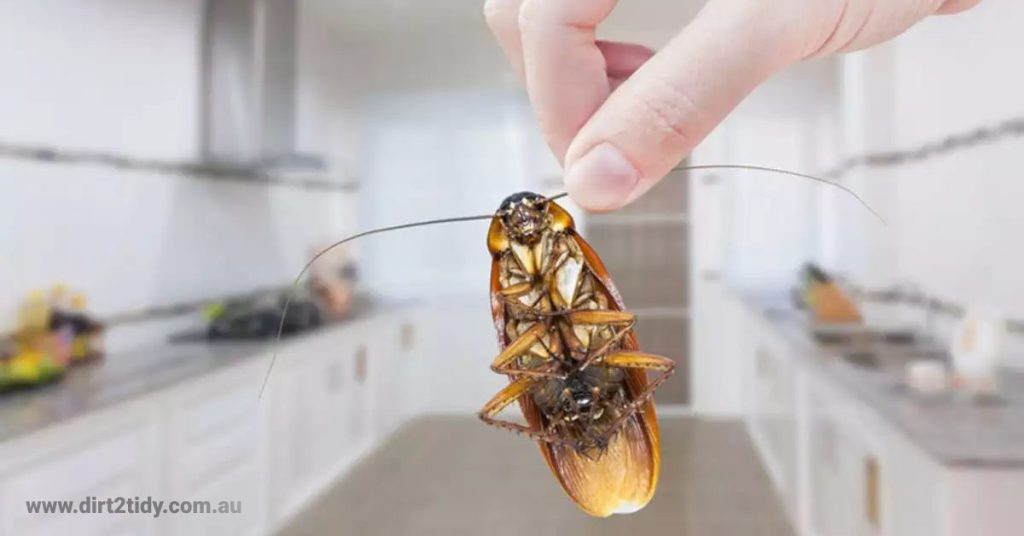Table of Contents
Pantry pests may get in no matter how clean your kitchen is. Moths, weevils, and tiny black ants are the most frequent pantry pests. Pantry bugs are most typically seen in food that we buy at the grocery store. These unwelcome guests aren’t just a sign of untidiness—pantry pests are, in fact, more of a nuisance than a real threat. Unlike a white ant infestation, they’re not dangerous, but they can certainly ruin your appetite. The most common intruders are moths, weevils, and small beetles, with a particular fondness for your grains.
Flours, rice, grains, cereals, and processed meals all include them. During the pandemic’s panic purchasing stages, individuals stockpiled flours, cereals, grains, and pastas. Many people haven’t finished all of the food, and if there were a few bugs in the food, it’s given the bugs an opportunity to grow in a common pantry. If you spot pantry bugs, it’s likely they hitchhiked in from the store, hiding in packaging that looked perfectly sealed. Even unopened packs stored for a long time can harbor eggs that aren’t visible to the naked eye. In short, pantry pests are persistent little opportunists that can sneak into any kitchen—regardless of how spotless it is.
If you’ve stumbled across any pantry bugs recently and suspect you may have eaten them, don’t worry; they’re not dangerous.
Why Warmer Months Mean Extra Vigilance
You might notice that pantry bugs seem to throw more parties when the temperature rises. There’s a reason for that: heat and humidity are basically an all-inclusive resort for pests like moths, weevils, and ants. Warmer months speed up their life cycles, making it easier for them to multiply and sneak their way into every cereal box and flour bag you own.
That’s why keeping a spotless pantry is even more critical in spring and summer. Here are a few hygiene habits you’ll want to stick to:
- Stay on Top of Cleaning: Wipe down shelves regularly and keep crumbs in check. Even a few stray grains of rice can turn into a buffet for bugs.
- Seal Everything Tight: Store grains, cereals, and flours in airtight containers. This simple swap keeps out moisture—and the unwanted guests drawn to it.
- Don’t Overbuy: Tempting as bulk deals may be, try not to stockpile more than you’ll use quickly. Pests love old, forgotten packages.
- Quick Shelf Audits: Check food packaging for tiny holes or webbing, especially as the mercury climbs. If it looks odd or smells musty, toss it.
Practicing good hygiene isn’t just about looking tidy. In the warm seasons, it’s your best defense against pantry critters setting up camp in your kitchen staples.
So you’ve discovered some pantry bugs; what now?
Don’t worry, they’re easy to get rid of bugs. Take everything out of the pantry, one shelf at a time, including canned and jarred goods. Examine each open and unopened package.
Check the expiry dates on everything, and you may want to toss away unopened packs that you have kept for a long time because the laying eggs may not be visible. If you spot more than a few bugs in the pantry, it’s best to discard any open packaging right away. In cases of a larger infestation—when you see several bugs—don’t hesitate to discard all grains and start fresh with a thorough cleaning. Use a microfiber cloth and a non-toxic multi-purpose cleaner or soapy water to clean the shelves.
After carefully cleaning your pantry shelves, you may use an essential oil or white vinegar spray to keep pantry pests at bay. Combine half a cup of vinegar, half a cup of water, and 8 drops of each essential oil:
Insect repellents include lavender, peppermint, eucalyptus, bay leaves, and clove oil. Spray your pantry well, including the doors and corner joints, and let it sit for 5-10 minutes before washing it down with a microfiber towel.
These natural remedies are usually sufficient to prevent pantry bugs without having to reach for harsh pest control chemicals. Regularly using such preventative sprays can help deter moths, weevils, and ants from moving in. However, if you notice the problem becoming widespread or difficult to control, it’s wise to seek help from a professional pest control service before considering any chemical treatments. This ensures the safety of your home and food while effectively tackling stubborn infestations.
You may also like to read: Which is the best chemical for termite control?
Transfer any unaffected, unopened food that you want to save into airtight containers.
After you’ve cleaned everything, it’s time to restock the pantry and store food.
While you’re at it, reorganize your area by creating zones to eliminate clutter and consider adding style cupboards for extra storage.
Quick Tips to Keep Pantry Bugs Away
- Use Airtight Containers: Always transfer flours, grains, cereals, and similar dry goods into airtight containers as soon as you bring them home. This keeps bugs out and helps preserve freshness.
- Discard Open Packaging: If you find anything in torn or open packaging, or if it’s been sitting a while, it’s safer to toss it than risk a pantry pest population explosion.
- Clean EVERYTHING: Bugs love crumbs and spills, so make sure to wipe down not only the shelves but also corners, walls, and even the pantry door.
- Avoid Bulk Buying: Buying in bulk can be tempting, but unless you’ll use it quickly, large quantities can attract pests and give them more time to multiply.
- Bay Leaves for the Win: Tuck a few bay leaves into containers or on pantry shelves. Their strong scent naturally repels many pantry pests.
With a little vigilance and the right cleaning routine, your pantry can stay bug-free and organized.

In the Kitchen, There Are Ants.
If you find ants moving across the kitchen sinks and counters one by one, they are most likely odorous house ants, Argentine ants, or pavement ants.
When determining whether or not you have ants in your kitchen, look for the following ant characteristics:
There are six legs.
Antennae
Black, brown, or red are the most common hues
Sizes range from 1/3″ to 1/2″.
Small “waist,” big stomach
All three of the aforementioned species have voracious appetites and are drawn to food and wetness, making kitchens a perfect meeting place. Pavement ants have been observed to devour meats, bread, oils, and fats, whereas odorous house ants favor sweets.
Avoid storing grains near these places. Ants are most likely the pest in your kitchen if it matches the description above. To be assured, we recommend consulting a pest control specialist.
The Kitchen Has Cockroaches
Cockroaches are one of the most prevalent kitchen insects and cause health code violations in restaurants and other commercial kitchens, but they also infest home kitchens.
Although there are several cockroach species, they all have the same characteristics:
The hue is often reddish brown.
Body shape: oval
Can travel quite swiftly and is usually between 2/3″ and 3″ in size.
Prefer dark, damp environments.
Do your kitchen pests fit this description? These expert hitchhikers may enter the home through cardboard boxes, supermarket bags, food product packaging, and beverage cartons.

Animals in the Kitchen
Rodents are common kitchen intruders and have been known to grab the attention of health inspectors. The following are some of the most prevalent indications of a rodent infestation:
You may also like to read: How long does pest control last?
- Holes chewed their way through the walls and the floor.
- Droppings of rodents in cupboards, beneath sinks, and near food packages.
- Food packaging with holes or chewing marks
- Rodent nets are made of materials such as cloth and shredded paper.
- House mice and rats are the most prevalent culprits, drawn in by the food and nesting opportunities that kitchens provide. Contact a pest control specialist if you see any of the rodent infestation indications in your kitchen.
In the Kitchen, There Are Flies
In the kitchen, homeowners may also observe house flies and fruit flies. Although there are many distinct types of flies, the following features are prevalent among those found in kitchens:
Usually black, brown, or yellow. However, flies can be different colors, such as green.
Large round eyes that face forward
Usually spotted near food or garbage cans,
While house flies consume a wide range of human meals, fruit flies, as the name suggests, prefer fruits and vegetables. Leaving ripe fruits and vegetables out on the kitchen counter invites a family of flies to the table.

Pests in the Kitchen Pantry
Merchant grain beetles and Indian meal moths, sometimes known as pantry pests, are attracted to kitchen cupboards and pantries because of their distinct tastes.
The following are signs of pantry bugs in the kitchen:
Small bugs in and around cupboards, as well as on walls and ceilings.
Cabinets with unpleasant scents or discharges
Merchant grain beetles, as the name suggests, feed on grains such as cereals and items containing maize or corn meal.
While their classification is less important than their prevention, it’s worth noting that there are several different types of grain beetles that can invade your pantry, including These pantry pests can quickly turn your dry food storage into a costly problem if left unchecked, contaminating food supplies and resulting in unnecessary waste.
Preventing a Grain Beetle Infestation
- Be especially vigilant with pantry hygiene during the warmer months, when pests are most active.
- Clean your pantry regularly, making sure to remove crumbs and food debris from shelves and corners.
- Store pantry basics in a cool, dry, dark place to make your supplies less appealing to unwanted visitors.
- Make it a habit to give your pantry a thorough cleaning every three to six months—this not only helps keep pests at bay but also keeps your shelves organised and your food fresher for longer.
- Store grains, flour, and cereals in airtight containers to keep bugs out.
- Avoid leaving any food particles or spills behind in food preparation areas.
- Try to use up grains and flour quickly and avoid buying in bulk unless you have a pest-proof storage system. The small savings from bulk purchases can be lost if you need to discard infested products.
Indian meal moths, on the other hand, eat a more balanced diet of dried fruits, nuts, and pet food.
Indian meal moths, on the other hand, eat a more balanced diet of dried fruits, nuts, and pet food.
These pantry pests are notorious for sneaking into your home inside open packets of pasta, flour, or cereals—often hitching a ride from the processing plant or supermarket. While it’s difficult to avoid their arrival entirely, you can make your pantry less inviting:
- Store grains and flours in airtight containers to keep bugs out and freshness in.
- Transfer rarely eaten cereals out of their boxes and into sealed containers, or toss out what you won’t use after a few weeks.
- Clean pantry shelves regularly using water and vinegar to remove crumbs and spills that attract pests.
- Inspect all opened packaging for evidence of larvae, such as silky threads or clumps in flour and grains.
- If you spot more than a few bugs, discard all affected grains and give your pantry a thorough cleaning.
Did we mention to clean everything? Missing a spot often leads to another infestation before you know it.
Contact an exterminator if you see any of the aforementioned indicators in your house or need assistance detecting an infestation in your kitchen.




